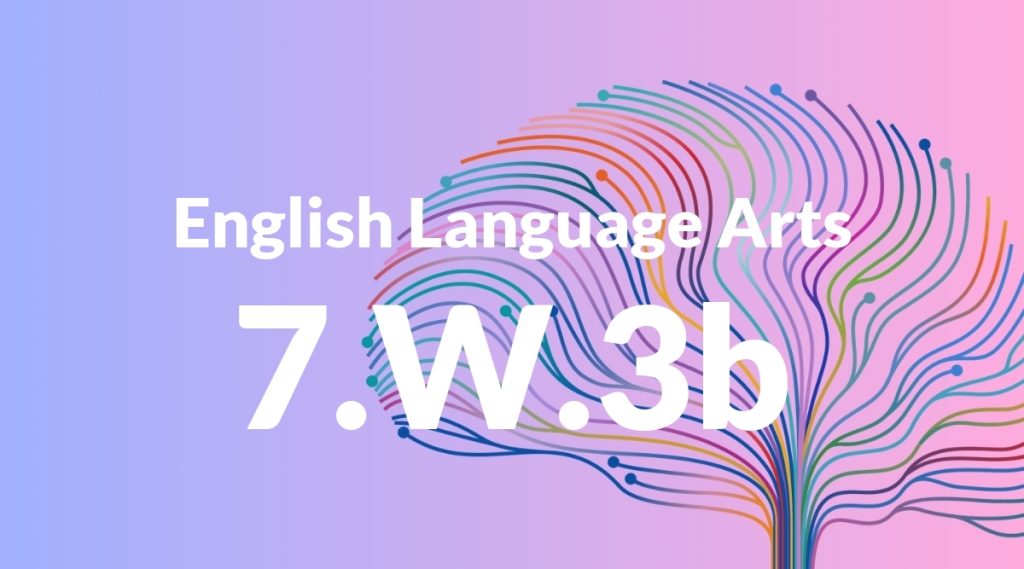Standard: 7.W.3b – Use narrative techniques, such as dialogue, pacing, and description, to develop experiences, events, and/or characters.
Grade level: Grade 7
Subject: English Language Arts
Domain: Writing
Teacher Overview
This standard emphasizes the use of narrative techniques to enhance storytelling. By mastering dialogue, pacing, and description, students will be able to create more vivid and engaging narratives. This skill is crucial for developing their writing abilities and understanding of literature. Students should be familiar with basic narrative elements and have some experience in writing simple stories. They should understand the role of characters, setting, and plot in a narrative.
After mastering this standard, students will be able to create more complex and engaging narratives. They will be prepared to analyze and critique narrative techniques in literature, enhancing their overall understanding and appreciation of storytelling.
Common Misconception 1
One common misconception is that dialogue alone can fully develop a character. This is incorrect because characters also need actions, thoughts, and descriptions to become well-rounded and believable.
Intervention 1
To address this misconception, provide students with examples of characters developed through a mix of dialogue, actions, and descriptions. Have them practice writing scenes that use all three techniques.
Common Misconception 2
Another misconception is that pacing means making a story fast-paced. Pacing actually involves controlling the speed of the narrative to enhance the story. Effective pacing can include slow moments to build tension or develop characters.
Intervention 2
To correct this misconception, show students examples of varied pacing in literature. Have them practice writing scenes with different pacing to understand its impact on the narrative.
Prerequisite Knowledge
Students should have a basic understanding of narrative structure, including the elements of a story (beginning, middle, end), and experience with writing simple narratives.
Subsequent Knowledge
Students will develop advanced storytelling skills, including the ability to create complex characters, intricate plots, and engaging dialogue. They will also learn to analyze and critique narrative techniques in literature.
Instructional Activities
- Writing short stories focusing on dialogue and character development
- Creating character diaries to explore character thoughts and actions
- Developing scripts for short plays to practice dialogue and pacing
- Crafting personal narratives with detailed descriptions
- Analyzing narrative techniques in selected literature




